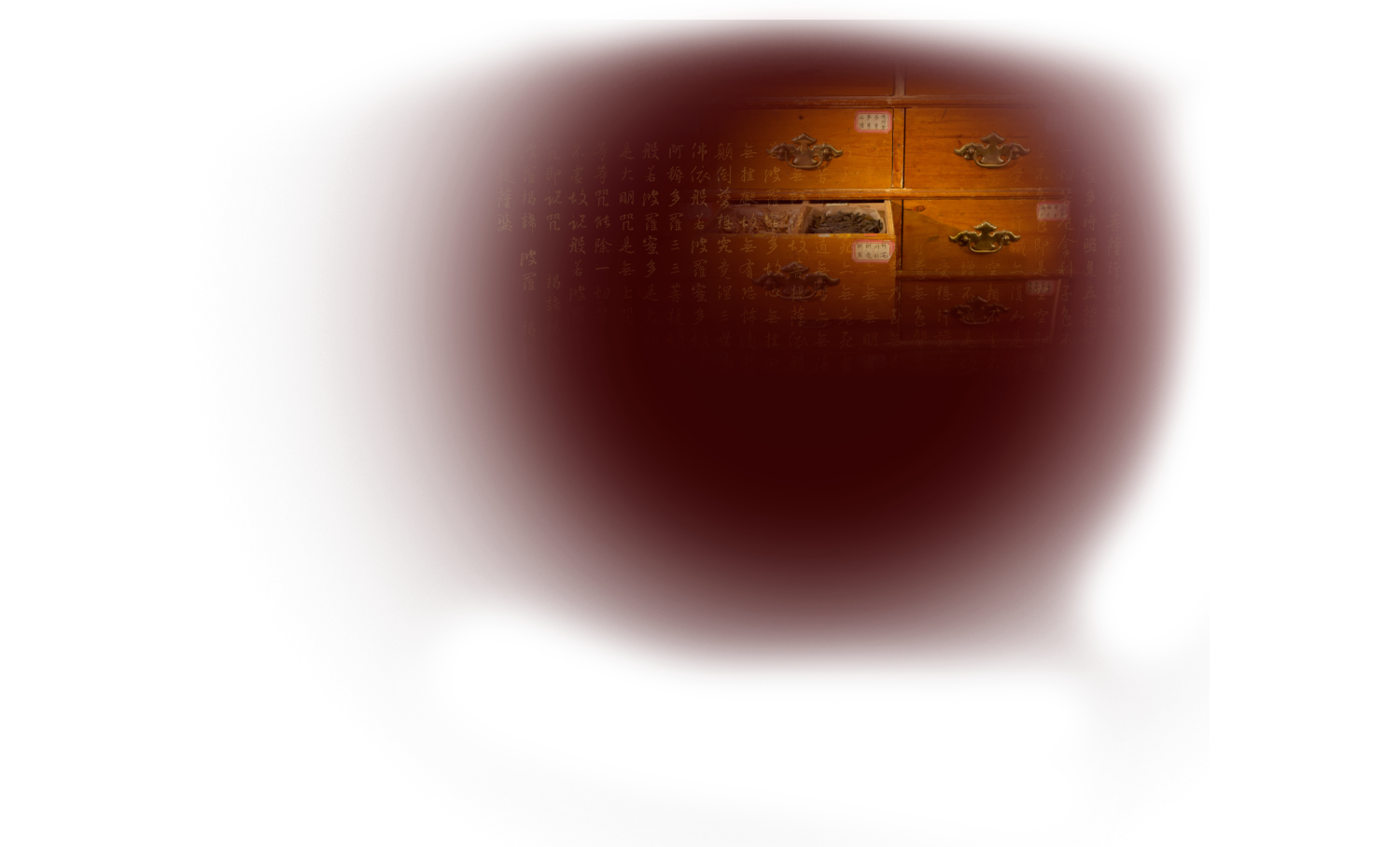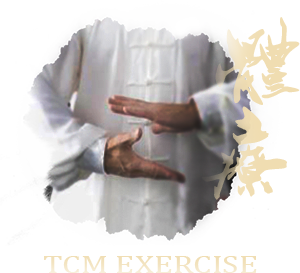
Healing Exercise
TCM healing exercises differ from regular sports exercise in that TCM healing exercises first emphasize concentration of the mind. The movement of the body then follows the intention of mind in order to ultimately build internal energy or correct imbalance.
Mind, body & spirit exercise helps to build not only physical strength, but willpower as well. Healthcare exercise is recommended to correct the balance of both the patients' physical and mental condition. Healing exercises includes Tai Chi, meditation, five elements therapy, five elements musical therapy, breath therapy and 5Rhythms (Gabrielle Roth). The widely popular Eighteen Methods of Exercises used in China benefit those with all sorts of pain, arthritis, and soft tissue injuries/disorders. The healthcare exercises and services provided by Ming Qi Natural Healthcare Center will provide both preventive and therapeutic benefit.


Wu Qin Xi- The Five Animal Frolics
The theories behind TCM healthcare exercises developed over thousands of years, simultaneous with the progression of Taoist and Buddhist thoughts and practices. Initially, these exercises were based on observations of nature and animals in the wild. In their natural environment, each animal has different movements and energies. By doing these exercises, a practitioner could imitate these animal’s body movements to experience their body language, mental spirit and wise nature. In this way, a practitioner would learn how to take on the animal’s natural energy as part of their own nature. From these very early observations, the renowned Chinese doctor Hua Tuo developed the theories and exercises behind what is now known as “Wu Qi Xi” –five animal-style exercises, which mimics the movements of five types of animals: the tiger, deer, bear, ape, and bird. The exercise requires a relaxed body state and complete concentration as natural movements are synchronized with breathing.
Benefits:
- Improves metabolism, digestion, and elimination - for weight control, more youthful appearance, and higher, longer-lasting energy.
- Stimulates the lymph system - for a stronger immune system, with less susceptibility to the flu or colds and quicker recover from illness.
- Improves circulation - alleviating conditions such as arthritis and chronic fatigue.
- Builds stronger, more durable bones.
- Massages internal organs - retarding the aging process by restoring internal organs to peak efficiency.
- Increases oxygen in the tissues - reducing tension, blockages and stagnant energy.
- Lubricates the joints - for pain free movement and greater flexibility.
- Soothes the nervous system - for feelings of contentment and serenity.
Tai Chi Quan
Tai Chi Chuan (Tai Ji Quan) means “Grand Ultimate Boxing”. It is a fighting style that uses the philosophy of the grand ultimate, or Tai Chi (the Yin Yang symbol). It is based on dualityIn the beginning stages, this ancient Taoist martial art uses slow, flowing movements to develop relaxation, leg strength, and inner power (chi).
Tai Chi Chuan is an introspective art that makes people spiritually and physically aware, improving their physical and mental balance. This form eventually develops into a superior fighting art that loses preconception and exists in the now. One reacts fluidly with speed and agility, being able to adapt to any situation.
Benefits: Tai Chi Chuan emphasizes a combination of action and stillness, Yin and Yang, activity in the body, but calmness in the mind. The external action is composed of a series of rounded movements and the inner exercise functions to promote the circulation of Qi and blood under the intention of the mind. This combination is capable of balancing the Yin and Yang and strengthening the Qi and blood within the body to make the person more energetic. Tai Chi has the function of nourishing the Shen, tonifying Qi, strengthening kidneys, tonifying the spleen, regulating the meridians, and nurturing the tendons, bones, and joints. Moreover, it can be used to supplement the treatment of neurological, circulatory, respiratory, digestive, and musculoskeletal diseases.
The purpose of Tai Chi Chuan exercise is to promote healing by means of opening blockages, boosting energy and strengthening areas of weakness. Many different schools of Tai Chi exist – the major ones being Yang Style and Chen style. Tai Chi Chuan is, in effect, a seed. Contained within it are methods, knowledge and philosophical principles that offer the practitioner interested in cultivating them, enormous opportunity for growth and realization pertaining to health. The term Tai Chi Chuan (or Tai Qi as it is commonly known) refers to the origins and foundations of the actual practice. On one level, Tai Chi indicates the Taoist philosophical term for the emergence of opposites (the primary instigator of change) from the undifferentiated origin and potential of Wu-Qi or the Tao. On another, more pragmatic level, Tai Qi also refers to the health and internal power aspects of the practice.
Tai Qi:
- Promotes digestion and enables the stomach to absorb the nourishment from food more efficiently,
- Benefits the kidneys which is a great boost to all other parts of the body,
- Bowers blood pressure and softens blood vessels,
- Prevents lime formation or precipitation in the bone of the elderly,
- Acts as a diuretic and laxative and cleanses the digestive organs,
- Wastes no energy, causes no panting, promotes perspiration, eliminates waste, and expels dampness,
- Strengthens the skin and keeps it free from boils and psoriasis, and
- Promotes the assimilation of nourishment from food and therefore mends bones and builds marrow, making one indefatigable and capable of performing hard work.
Qi Gong Exercise
The use of Qi Gong in health preservation has a long history dating back over 2,000 years. Qi is the animating life force that enables us to exist. The process of learning to connect to, work with, increase, direct, control and use this energy is Qi Gong. It is not a mysterious, mystical or esoteric practice, but rather a clearly oriented, highly developed technique, which utilizes both mind and body to understand the nature and movement of our life force or Qi. The practice of Qi Gong promotes overall well-being and people of any age and ability level can benefit.
In Chinese medical theory, the Qi follows the mind and the blood follows the Qi. As humans we have the capacity to focus our minds and create intent. It is this intent that enables us to transform and move energy. The mind engages the body via the central nervous system. By transforming the nerves through releasing tension and improving their efficiency, blood flow (via Qi and intent) is increased throughout the entire system, down to the cellular level. This increase in blood flow, which enlivens and invigorates the body, is one of the methods employed by the practice of Qi Gong to generate more energy.
Classical Qi Gong is another form of TCM Healthcare exercise. Recently gaining in popularity in the United States, the practice of Qigong can be explained from two aspects, the active and the serene. The active aspect refers to the body exercises and slow movements guided by the mind and breath. Together with self-massage and abdominal breathing, the exercises and movements stimulate the internal organs and result in the re-adjustment of the body’s physiological function. The serene aspect refers to the self-exercise of the mind and breath through which the practitioner is able to enter a quiet state that recovers function of the parasympathetic aspect of the nervous system.
Benefits: Qi Gong encompasses many movements, which enable people to engage with the primary manifestations of Yin and Yang in their bodies.
Qi Gong:
- Re-educates posture by balancing the right and left body hemispheres,
- Dramatically increases sensory perception by engaging mind and physical body equally,
- Pumps the cerebra-spinal fluid (a nutrient bath and lubricating liquid which surrounds the spinal cord and brain),
- Eases the transportation of nutrients and waste to/from the cells,
- Has specific exercises which substantially increase movement in the entire pelvic area, leading to extensive mobilization of tissue and lubrication of joints,
- Works extensively on the body's muscle and soft tissue allowing fine muscular contraction which stimulates and massages the lymphatic nodes, maximizing the transportation of lymph throughout the body and bolstering immune responses,
- Balances internal pressure which allow the glands of the endocrine system to optimize their secretions,
- Opens the body cavities thus reducing constriction which allows the organs more space to work or "breathe",
- Promotes the clear passage of air and fluids throughout the entire body. This in turn ensures efficient operation of all organs, connective tubes and tissue, and
- Increases sensitivity, improves control of seminal emission, balances sexual energy and helps regulate menstruation.
Ba Duan Jin- Eight Style Movement
Ba Duan Jin (Eight Style Movement) consists of eight different movements, each of which is simple, short, and effective. It is quite popular, since time or location does not restrict one’s practice. It consists of the following two styles: The “Wen” or “Sedentary Style” adopts a sitting position with concentrated mind and attention to one’s breath. This particular type incorporates knocking teeth, shaking the head, gargling in the throat, massaging the kidney area, swaying the shoulders, pressing the scalp, stretching the sole of the foot, etc. In contrast, “The Wu” or “Active Style” adopts a standing position emphasizing body movement. These movements are referred to as “Upholding the heaven and regulating the San Jiao,” “Stretching the bow with both sides,” “Regulating the spleen and stomach,” “Looking backwards,” “Swaying the head and tail,” “Tapping at the back,” “Holding fist and staring,” and “Stretching to both soles” .
Lian Gong Shi Ba Fa-Exercise 18 Style
In 1950, China submitted its initial bid to participate in the international sports arena of the Olympics. As a result, exercise and sports training became a major source of activity for the entire country. In their effort to excel in this area, the Chinese government challenged all Traditional Chinese Medical (TCM) professionals and Sports Injury Specialists to determine the most effective means of treating and healing sports and training related injuries. From this effort, the “Lian Gong Shi Ba Fa” or “Exercise 18 style” Qi Gong exercise theory was developed. This method was developed based on Western Medical knowledge and was therefore a more modern application of this ancient health and healing technique. Today, both Qi Gong and Tai Qi are used in rehabilitation and disease treatment. It is in this way that the physical and spiritual aspects are incorporated and both mind and body are employed together to achieve harmony and balance.
Benefits
“Lian Gong Shi Ba Fa” or “Exercise 18 style” was developed by the sports committee in China in 1950 according to the recommendations of the Chinese Traumalogic Orthopedic Doctors Association. This form of exercise is especially designed for neck, shoulder, and lumbar pain patients. By emphasizing inner strength, it facilitates the acquisition of Qi. It is quite effective in treating Qi and blood stasis as a result of lumbar or cervical disorders.
Similar to other exercises of its type, it is most effective when combined with Acupuncture and Tui-Na/Acupressure, since there is a mutual enhancement of therapeutic effects.
“Lian Gong Shi Ba Fa” or “Exercise 18 style” is unique in that it is a form of treatment as well as a method of prevention. If one continues to practice this form of exercise on a daily basis, many forms of occupational muscular injury and fatigue may be averted.
![]()
